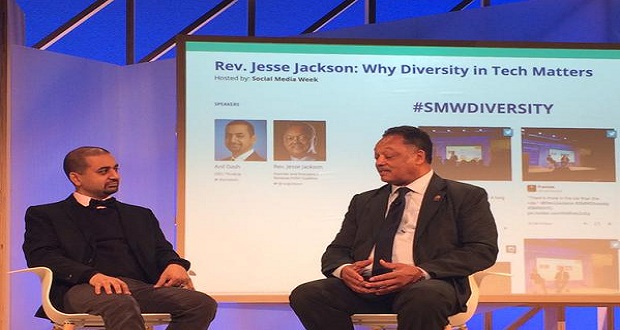
Over the last several weeks, my colleagues and I have explored ways to move diversity, inclusion, equity and justice work from confinement inside corporate walls out into the world at-large, where true, large-scale allyship and accomplice-ship can take root. During this series, both Brittany J. Harris and Thamara Subramanian have mentioned the why for doing this work: what drives us, DEIJ practitioners, to keep rolling the boulder up the hill; why we at The Winters Group insist on pushing ourselves and our clients; and why we as individuals are committed to the cause.
There is an inherent tension in DEIJ in identifying and leading with our whys, though. What drives an individual (for instance, “I am invested because of ‘humanity.’ ”) often stands at odds with what may drive a company (oftentimes “the business case”).
This tension can lead to myriad issues, including but not limited to:
- Undermining of a company’s values and mission
- Misalignment between employees and leadership
- Mistrust between employees (especially BIPOC employees) and employers
- Ineffective, milquetoast “trainings” or one-off sessions
In order to mitigate, or even eliminate, these potential problems, it’s crucial that organizations know and name their own why for doing equity and inclusion work.
Adapting Simon Sinek’s Golden Circle framework is a particularly useful place to start when identifying your collective why.

In the Boardroom
If your organization is at the beginning, or even middle or end, of a DEIJ learning experience, then identify and center the why—the core belief—as shown here. Then let the how (the actions that support the why) and the what (the tangible evidence that you’re accomplishing the why) follow.
If your org is at the beginning, or even middle or end, of a DEIJ learning experience, then identify and center the why. Then let the how (the actions that support the why) and the what (the tangible evidence that you’re… Click To TweetTo put a finer point on it: Why is the organization providing this learning experience? Is it to affirm the feelings, rage, truths and experiences of Black employees? To ensure fair, equitable and just representation among the workforce? To encourage and empower people to have Bold, Inclusive Conversations®? Is it for equity or humanity or even justice? Perhaps it’s simply out of fear of backlash or boycott?
Whatever the reason, there is a reason. Identify it. Share it. Own it. Lead with it.
It quickly becomes obvious—and damaging—when the why is overlooked or obfuscated. Saying that an initiative is in service of justice while showing that it’s only performative allyship, for example, is a surefire way to lose trust and buy-in you may have garnered from those impacted and invested. Failing to identify the “why” at all risks losing those new to the topic, and skeptics.
Once you’ve identified a collective why, the how snaps into focus, quickly followed by the what.
If the why is as simple as wanting to check a “diversity training” box, then the how is more likely to be a 60-minute overview lecture than a months-long, challenging reflective journey. This check-the-box approach is also far less likely to be effectual, and the what would be something akin to, “Every employee attends a mandatory diversity session.”
Conversely, if wanting to center and honor the feelings and experiences of BIPOC employees is our why, the “how” may begin with listening sessions or focus groups with BIPOC employees, that then informs a substantive “what” – like a long-term strategy for organizational change to address the pain points that were identified in the feedback shared.
In the Office
Once an organization and all of its employees know why it’s collectively embarking or continuing on this journey, then it’s time to dig deeper on an individual level.
Beyond the collective, each participant in a learning experience has their own individual reason for doing the work. Before—or early on in—a learning experience, participants should reflect on their personal why, whether or not it’s the same as the organization’s.
Some may lead with justice, some may simply say, “because I’m required to be here.” While folks in the DEIJ space certainly want more of the former, the latter is also a valid (albeit discouraging) starting point.
The importance of this step is threefold:
- It encourages self-reflection
- It elucidates values misalignments
- It establishes a baseline for tracking growth
A truly effective DEI learning experience will be created in such a way that it fosters both organizational values alignment and personal growth by, again, leading with the why.
Beyond the Boardroom and Into the World
Ideally, either from the outset or through a powerful shared learning experience, both the organization and the individuals within it will have a relatively unified why for DEI.
A unified why, for equity and justice in turn, lends itself to action outside of the virtual and real walls of the organization.
A unified why, for equity and justice in turn, lends itself to action outside of the virtual and real walls of the organization. Click To TweetThis is the key to effecting mass, systemic transformation in society as a whole. Purpose drives action; collective purpose drives change.
This is the key to effecting mass, systemic transformation in society as a whole. Purpose drives action; collective purpose drives change. Click To TweetAt this point, it’s helpful to take another look at the Golden Circle, this time with an eye outward:

Starting with the shared why, and preferably using an equity-centered design process, build out an action plan for how you’ll make the changes you want to see in the world.
Let’s walk through an example. This large organization has completed most of a multi-month learning experience and is now ready to move beyond the boardroom into having an immediate and lasting impact on their local community.
- Why: The organization has settled on justice as the why. Some individuals want to use their power to lift and center marginalized voices, some want to be better allies, some want to make good trouble by being accomplices. The reasons are varied, but they all seek the same outcome of justice for all.
- How: Externally, they have decided that are going to use their economic assets and importance to the local economy to push for more just policing and, ultimately, reallocation of funds to support more needs-based interventions such as using social workers as first responders. They will do this by speaking up and out against unfair policing practices, donating to local nonprofits, doing community outreach and education for skeptics, and amplifying and centering the voices of local activists who have been doing this work for much longer.
- What: What they are producing, then, is simple—they are producing change in their community that makes the policing system more just and equitable.
Following this method—identifying the why, how and what of your DEIJ learning experiences, and using that to unify around and build out the why, how and what of collective purpose and action—no leader, employee, customer, or community member will have any doubt about the organization’s values or its commitment to and effectiveness in pushing for systemic change.



















